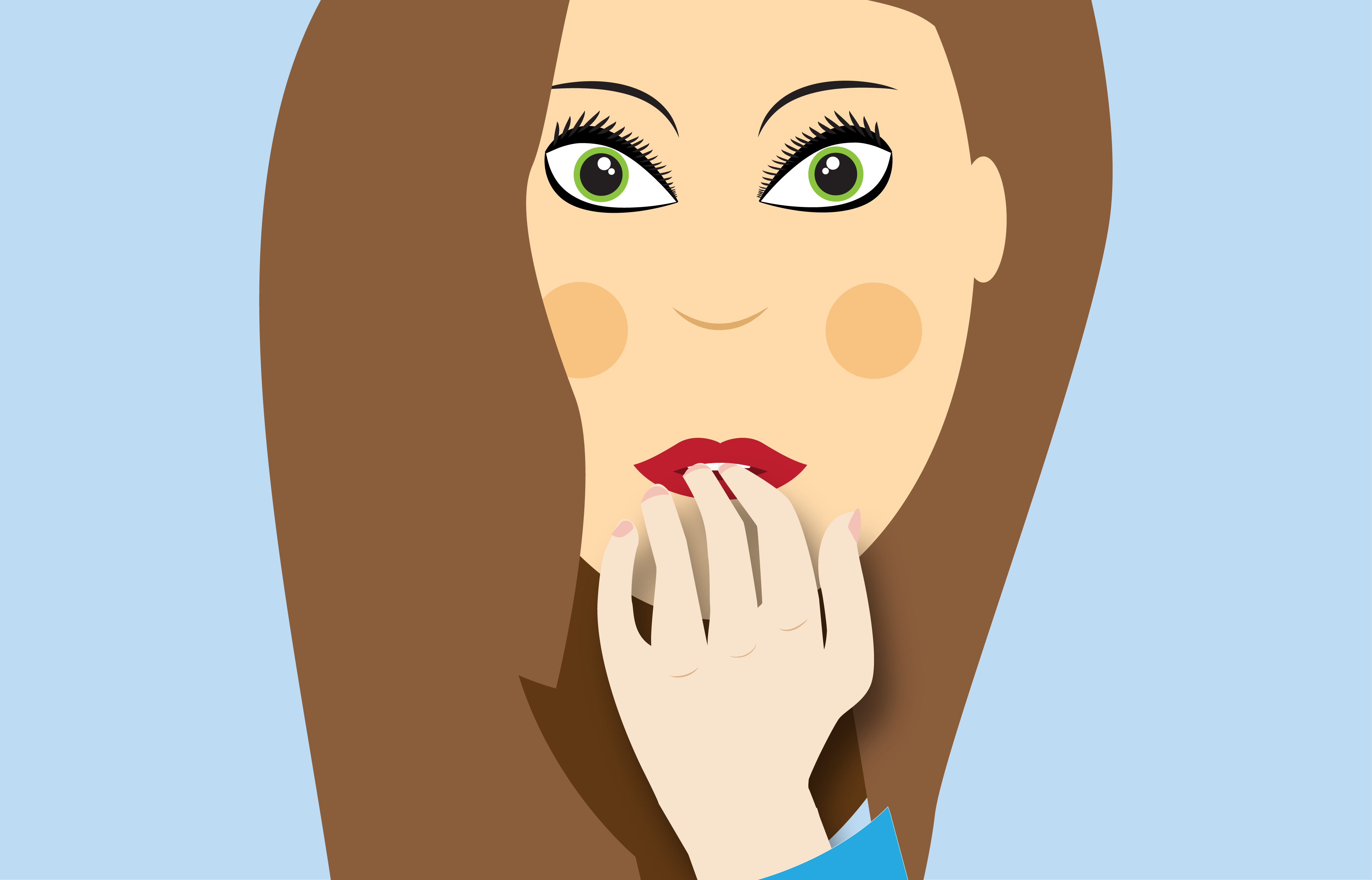
Nail biting—or onychophagia—also counts as a body-focused repetitive behavior (BFRB). Onychophagia literally means “fingernail/toenail eating.” It is characterized by repetitive biting or chewing on one’s own fingernails. Those affected may perform the behavior consciously (focused biters) or unconsciously (automatic biters). Onychophagy can lead to chronic damage (e.g., inflammation of the nail bed or nail growth disorders).
Is it true that discipline is the only way to stop nail biting? Yes and no… You can find various suggestions under Helpful Things as well as Self-Help Techniques and Videos. Self-help manuals as well as reports and blogs from other affected people can also support success. If you experience other problems, such as feeling down or depressed, you should also try the free COGITO app (available for Android and iOS). The app contains numerous tips on how to raise your self-esteem and mood.
Diagnosis
In the current classification system for mental disorders (DSM-5), compulsive nail biting is listed as a body-focused repetitive behavior under the category of “obsessive-compulsive and related disorders” (APA, 2013).
Age of onset
Nail biting usually does not occur until the age of four or five. It usually intensifies during childhood and adolescence and then declines (Halteh et al., 2017; Siddiqui & Qureshi, 2020; Winebrake et al., 2018). The average age of onset is nine years (Moritz et al., 2023b).
Prevalence
General population
According to empirical studies, approximately 20 to 30 percent of the general population is affected by onychophagia at least once in their lifetime (Halteh et al., 2017; Lee & Lipner, 2022; Pacan et al., 2014). For about 11 percent of the general population, nail biting is accompanied by visible consequences (Moritz et al., 2023a). However, the true prevalence is likely underestimated as many affected individuals are too ashamed to report their disorder and therefore avoid screening and treatment (Ghanizadeh, 2008). Many are also unaware that treatment options exist and thus do not seek professional help.
Childhood/Adolescence
Approximately 45 percent of children between the age of 10 and puberty are affected by onychophagia (Halteh et al., 2017; Wechsler, 1931). According to other studies, 37 percent of children and adolescents aged 3 to 21 years and approximately 29 percent of adolescents and young adults aged 14 to 20 years bite their nails (Erdogan et al., 2021; Winebrake et al., 2018).
Adulthood
If the disorder is not properly treated, or not treated at all during childhood, it can continue into adulthood. According to one study, 19.2 percent of young adults aged 21 to 26 years and 21.5 percent of adults aged 18 to 35 years suffer from onychophagia (Halteh et al., 2017). Overall, the prevalence declines with increasing age.
Gender differences
Studies are inconclusive regarding gender differences. While some studies report a higher incidence in males, others report the opposite or have been unable to measure a difference (Pacan et al., 2014).
Manifestation
The transition from normal behavior to a disorder manifests when the resulting harm is clearly visible and the behavior causes significant distress or impairment in social, occupational, or other important areas of life (e.g., severe shame or avoidance of reaching out to others).
Unlike some impulse-control disorders, nail biting is difficult to conceal; chewed nails, short/uneven nail beds, missing cuticles, and discolored fingertips are often visible to others. Onychophagia is often associated with pain, tension before or when trying to resist the behavior, feelings of pleasure after biting, and psychological distress. On the one hand, there is something self-injurious about the behavior, but on the other hand, there is also a satisfying or pleasurable component for some affected individuals (e.g., tension relief), which is why some find it difficult to kick the habit.
Consequences
There are many consequences of nail biting: feelings of guilt and shame, significant damage to the cuticle and nails, and scarred nail folds. In certain cases, when the skin around the nail is chewed and bloody, infections and inflammations can affect nail growth.
Literature
American Psychiatric Association. (2013). Diagnostic and statistical manual of mental disorders (5th ed.). https://doi.org/10.1176/appi.books.9780890425596
Erdogan, H. K., Arslantas, D., Atay, E., Eyuboglu, D., Unsal, A., Dagtekin, G. & Kilinc, A. (2021). Prevalence of onychophagia and its relation to stress and quality of life. Acta Dermatovenerologica Alpina, Pannonica, et Adriatica, 30(1), 15–19. https://doi.org/10.15570/actaapa.2021.4
Ghanizadeh A. (2008). Association of nail biting and psychiatric disorders in children and their parents in a psychiatrically referred sample of children. Child and Adolescent Psychiatry and Mental Health, 2(1), 13. https://doi.org/10.1186/1753-2000-2-13
Halteh, P., Scher, R. K., & Lipner, S. R. (2017). Onychophagia: a nail-biting conundrum for physicians. Journal of Dermatological Treatment, 28(2), 166–172. https://doi.org/10.1080/09546634.2016.1200711
Lee, D. K., & Lipner, S. R. (2022). Update on diagnosis and management of onychophagia and onychotillomania. International Journal of Environmental Research and Public Health, 19(6), 3392. https://doi.org/10.3390/ijerph19063392
Moritz, S., Scheunemann, J., Schmotz, S., Hoyer, L., Grudzień, D., & Aleksandrowicz, A. (2023a). Prevalence of body-focused repetitive behaviors and disorders in a representative population sample.
Moritz, S., Penney, D., Mißmann, F., Snorrason, I., & Schmotz S. (2023b) Same same but different? Phenomenological differences among different types of body-focused repetitive behaviors. Annals of Clinical Psychiatry
Pacan, P., Grzesiak, M., Reich, A., Kantorska-Janiec, M., & Szepietowski, J. C. (2014). Onychophagia and onychotillomania: prevalence, clinical picture and comorbidities. Acta Dermato-Venereologica, 94(1), 67–71. https://doi.org/10.2340/00015555-1616
Siddiqui, J. A., & Qureshi, S. F. (2020). Onychophagia (Nail Biting): an overview. Indian Journal of Mental Health, 7(2). 97–104. https://doi.org/10.30877/ijmh.7.2.2020.97-104
Winebrake, J. P., Grover, K., Halteh, P., & Lipner, S. R. (2018). Pediatric onychophagia: a survey-based study of prevalence, etiologies, and co-morbidities. American Journal of Clinical Dermatology, 19(6), 887–891. https://doi.org/10.1007/s40257-018-0386-1
Wechsler, D. (1931). The incidence and significance of fingernail biting in children. Psychoanalytic Review, 18, 201–209.